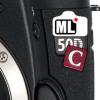Leaderboard
Popular Content
Showing content with the highest reputation on 01/16/2014 in all areas
-

Why I am going with 4K and why you should too
fuzzynormal and one other reacted to Sean Cunningham for a topic
Even 1080P, most folks don't need and shouldn't be editing raw or scrounging around for specs that let them spend gobs of money to edit with the raw files. They need to really learn how to edit and separate their editing from conform+finish. You can be totally productive with terribly basic hardware when you take a disciplined approach and understand the process.2 points -

Why I am going with 4K and why you should too
jonpais and one other reacted to fuzzynormal for a topic
The workflow to do editing involves an intermediate step, sure, but I did plenty of proxy editing in the mid-90's (imagine a computer not powerful enough to handle 29.97 640x480 video) and proxy edits are not that big of a deal. I'd rather do proxy cuts than spend 10K on computer hardware. If you do proxy editing you would't need a RAID, really. In FCP, for example, you'd simply ingest your media in a proxy low res format and do your entire edit. When it's finished you'd load in your high res clips and then reconnect the files for a 4K video. Anyway, point is, it might seem like a big deal to accomplish if you haven't done it before, but once you've pulled it off, you'd realize it's not too difficult. I actually did a documentary edit this way two years ago because loading up hundreds of hours of 1080 422 prores was too much data...so we just cut it low-res.2 points -
Another piece of evidence why these beasts command such a high price! This was the Olympus 85mm f2 with a single coated isco 36. this is with the Olympus set at F2 for a 10 second exposure. '>2 points
-

Why I am going with 4K and why you should too
mtheory and one other reacted to Sean Cunningham for a topic
And you'd be in the company of a lot of respected DPs that have made the transition to digital. Arri has proven since the introduction of the Alexa that, when it comes to digital, how you fill those rows and columns is ultimately more important than how many rows and columns you're filling. Higher and higher resolution and more and more DR and wider and wider color gamut are all goals the engineers busy working away at Sony or RED understand. They're practical problems with practical solutions, overcome by throwing more and faster engineering at them. These engineers aren't going to create better cameras though. Last night I finally got around to watching Paul Thomas Anderson's The Master and immediately thought about where we were going here. It's almost poetic that this film was released the same year as the first installment of The Hobbit, a shitty looking 4K movie shot on RED. I'm not anti-RED and there are plenty of good looking RED films, this isn't one of them and this film is a good example of what's missing from RED (and Sony's) path. Reading about their workflow, on The Master, it reinforces my feelings that 4K and beyond, with digital cameras, is really a problem for filmmaking, and it's not just about resolution. Nobody has ever complained that 65mm made actors or sets or props or make up look bad. The Master was a mixed 65mm (mostly) and 35mm show, graded photochemically with both print and DCP distribution. They did four separate release finishes for this film, with true photochemical for 70mm and 35mm prints. It's crazy. But for their DI they scanned the 5-perf 65mm at 8K and the 4-perf 35mm at 6K for an eventual 4K DCP finish. More than once I've read, based on DP and colorist commentary, that anamorphic 35mm with a digital 4K finish is considered minimally what you need if you care about preserving most of what's there in the neg, where 2K is an abomination, but 6K for spherical when you're not shooting 8-perf seems excessive by conventional wisdom. Everything I've read over the years about how obsessive P.T. Anderson is over the photography of his films leads me to believe they weren't assigning film this level of resolution unless it warranted it. Every aspect of his acquisition and release methodology was thoroughly tested. My own experience on dozens and dozens of films working with scanned 35mm imagery concurs. Making 4K actually look good with digital cameras isn't something that seems part of the conversation at these electronics shows and soft lenses is the current bandaid but I think it's just that. They're not confronting head on a fundamental flaw in how these sensors are recording reality so discretely and unattractively. Resolution is to blame but film proves this to be false. For the 35mm portions of The Master the emphasis was on the sharpest lenses available, so that the footage cut well with the 65mm. Meanwhile DP after DP are on record choosing reportedly soft lenses, like Cooke S4, for high resolution digital acquisition, otherwise finding the look is harsh and unappealing. Moreover, PT Anderson requires his films be shot on the slowest stocks available, ensuring the smallest possible grain. DP Mihai Malaimare brought his personal 85mm Zeiss Jena for Panavization, the sharpest 85mm he's ever used or seen, and Panavision found a matching set of expanded focal lengths already in their possession. All this emphasis on resolution didn't make the film less beautiful. On the contrary, I can't think of the last time I saw close-ups in a motion picture that inspired this much awe. It was just astounding. And the color. Seeing a film, shot on film, with a photochemical grade that looks this amazing also points out just how over-graded a majority of films are, regardless of the origination. There's a lot of "just because you can doesn't mean you should" sort of observations one could make. All the criticisms levied against The Hobbit and DP after DP working around and against the "edge" of Ultra-HD (some of which, yes, is preserved even in 2K or 1080P reductions), this was never the case with film, shooting with what we know to be higher resolving power than 4K. I think we need to be shifting the conversation away from just the simple number of rows and columns and to how they're being filled. Video engineers did finally get around to giving us the ability to shoot video with film-like gamma curves, finally appreciating that we don't like our movies looking like the nightly news. Now they need to appreciate that 4K+ for movies needs to be different than 4K+ for covering Formula-1 or football.2 points -
Asus 28" 4K reported to have native 4K 60Hz, unlike the Dell offering which only have 4K 30hz, they both gonna cost for $800 and less I think I used to have MBPR 15, but gradually overtime they get overheat, my friend's power adapter even melted! (my one clocked over 100c when rendering, you can probably boil water or cook some egg on it lol) Now I bought my self a new desktop for editing and rendering, it is at least 70% faster than MBPR 15 when u export the video out, and at only 1/3rd of the price and runs much cooler too, with a lot of HDD space to waste. (and option to add PCI-E HDD/SSD in the future too for ultimate speed), with 32GB of ram it should handle up to 6K no problem too I hope Btw if you happened to see 4K monitor you can instantly tell the difference between 4K and FHD/WQHD monitors, the difference in clarity and detail is quite apparent, and FHD looks soft on 4K compare to 4K native (on MBPR the difference is not that great, since 15" is really small)1 point
-

Why I am going with 4K and why you should too
Paul Ning reacted to fuzzynormal for a topic
This is going off topic, but from the online discussions I've seen, what some folks don't seem to fathom about the whole resolution debate, when talking in the context of a film like The Hobbit, is the characteristics of perceived resolution when the frame rate increases. The faster the frame rate, the more that particular series of still pictures are viewed as more RESOLVED and lifelike...even if the pixel resolution is IDENTICAL and shot from the SAME camera. Everyone seems to focus their discuss pixel resolution, when it (I think) is about the aesthetic issue of slower frame rates. This is an overlooked cinematic effect that shouldn't be ignored on-line, but too often is. (Professionals get it though) Look, here's a straw man for ya: "Oh, I like films shot on the Alexa!" people argue, "It's so much better than everything else. So organic and "pure." Well, yeah. It kinda is, but are you enamored with the cinematic look of the frame rate or the actual image resolution? I suggest it's both. If you shot 60p on an Alexa I guarantee you a film purist would take one look at the result and be horrified at the "videoness" of the image. Shoot the same exact scene at 24p on the Alexa, play it back, and the film purist would instantly feel more comfortable. Aside from all that, just watching a film shot in 48p, then played back and displayed at 24p will certainly alter the perceived cinematic aesthetic of the film. It will present different visual characteristic. At 24p you'd be watching every other frame of a 48p shoot and that's all it takes. Watch the footage at it's initially shot 48p and it starts to look more "video/electronic" (and thus less cinematic) to the human eye. You got a camera and monitor that does both 25p and 50p? Shoot 50p and put the clip on a 50p timeline and then on a 25p time line. Watch the difference. Or, shoot a horse race at 50p then shoot another at 25p and go look at the perceived change of the image. You'll see in a hurry it's not an issue about resolution that's altering your idea of what it means for an image to be "cinematic." ...and I'm not even getting into motion blur and shutter speeds, which also greatly alter the perception of moving pictures. Long rant short: It's not just about the resolution.1 point -
See the Digital Bolex at Hot Rod Cameras in LA - Wednesday 15th January
Chrad reacted to Kays Alatrakchi for a topic
Got there around 3pm yesterday and hung out for about an hour. These are just my personal impressions from a very limited interaction with the camera and brief conversations with Joe and some of the other attendees. Please keep in mind that these are personal opinions and they might not be entirely accurate or reflect the final camera's functionality. Ok, here goes: First let me say that Joe seems like a very passionate and super nice guy, there is a lot to be said about someone who pursued an idea a saw it through realization, kudos to him and his team! I also want to say that the image quality that I saw on the computer (the camera records CDNG files with Aiff audio) was very pleasant and detailed with low noise and good shadows and highlights. Having said that, unfortunately this camera appears to have a classic case of a solution-looking-for-a-problem, starting from the form factor which doesn't lend itself either to traditional mounting solutions nor to newer DSLR rigs. Sure you can mount it on a tripod, but trying to attach it to a rail system with a follow focus gear is going to be...challenging. I was also surprised at the lack of some screw holes in the body which would come in really handy to attach an external monitor or other gadgets. It does have a hot-shoe flash mount, but I personally avoid those with larger and heavier attachments. The pistol grip is a cool idea, but the camera is fairly heavy (heavier than a 5D with a hefty lens) One's arm would likely become sore after about 20 minutes of holding it. The decision was made to be true to the original and make the record trigger on the handle not latch when pressed to record. While this is the way the original Bolex operated, it would have been nice if a latch option would have been provided. The camera does have a record button on the top which works as expected, but makes one wonder if the pistol grip button will largely be ignored by most operators. The camera features two CF card slots, however all the video is recorded to a non-removable internal SSD 500Gb drive. Why not write directly to easily removable CF cards instead? Methinks if the Blackmagic Pocket Camera can do it, why not the Digital Bolex? The internal drive can hold about an hour-ish and then some worth of video, and the data can then be transferred to the CF cards, or to a computer through a USB 3 slot. Transfer time through USB 3 for about 500Gb worth of data....about an hour. Lens mount is a C-type. This was another bit of odd choice to me, while once again this mount is true to the original Bolex, why require the end user to buy into yet another type of adapter, particularly one which is not used by anyone else? No removable battery...grrrrr. 2K -- The sensor is a super-16mm sized one, shooting at 2K uses the entire sensor, while shooting in 1080p mode crops the sensor down to what Joe described as regular 16mm size. In my opinion, 2K offers neither high enough resolution for re-cropping and enlargement in post, nor is particularly useful as a delivery format for web, festivals, and DVD/Blu Ray where this camera's output is likely going to end up. So why not either stick to 1080 and use the full sensor, or go all the way up to 4K? Last but not least, the price. At over $3k (actually $3600 after the drive upgrade to 500Gb) I am not quite sure how this camera will fare against the Blackmagic Cinema Camera which features a larger sensor, EF or m4/3 mount, higher resolution, swappable media, and already a thriving accessories ecosystem. Will no-rolling shutter and a cool vintage vibe be enough? In closing, I did like the image that I saw quite a bit, and I feel that some of my concerns could be fixed with a firmware update (most notably the gun trigger function and maybe the ability for the camera to write directly to fast CF cards). I'm not quite sure how this camera will do against Blackmagic and whatever else is announced in April, but I wish Joe and his team the best of luck and a great deal of success nonetheless. I applaud Joe for pursuing a dream, and I think this world needs more, and not less guys like him. Despite the potential shortcomings of this camera, I am happy that it exists, and I am happy that people like Joe are able to realize their visions. Once again, these are just my opinions based on a very brief encounter with the Digital Bolex, please take everything I just typed with a huge grain of salt and try to test drive this camera for yourself before you come to a decision on whether you want to buy one or not.1 point -
believe it, it'll be here in couple months :) i've been shooting 4K since 2010, but never deliver anything in higher than 1080 :) and to me 4k (at least today) not as much about resolution as about detail and dr; i didn't have a chance to get a closer look at XAVC, but red R3Ds are extremely light , in fact way lighter than AVCHD for example, and i can edit 4K raw on my slightly modified Samsung i7 laptop. i can't wait to get that lil 4k camera!1 point
-
Olympus phase detect strips showing up in E-M1 video
Re-up Flms reacted to sgreszcz for a topic
Is the video output of the EM-1 that much better than the EM-5? I have the latter and get a lot of blocky video when things start moving (leaves on trees, etc.) Otherwise, the image is quite nice and the IBIS makes it easy to shoot stable video without any other gear.1 point -

Olympus phase detect strips showing up in E-M1 video
Ernesto Mantaras reacted to Julian for a topic
See it as a bonus, It's like getting anamorphic flares for free!1 point -
Why I am going with 4K and why you should too
Aussie Ash reacted to Axel for a topic
"And, the downsampling is key if you really want the best possible resolution and accurate color for 1080p with RGGB grid array sensors." Well, yes, we had this discussion before. A downsampled image can't by any means increase accuracy. It can have no visible aliasing, and that's a good thing. Done right, a 4k clip downsampled to 1080 will *look* better than a genuine 1080 clip - if there was one, because you simply can't have absolute accuracy. I am curious to see the first few hundred tests. Will they look like Vermeers (I think Jan Vermeer was mentioned somewhere above, a painter famous for depicting details, which in art remained an exception)?1 point -
I think this is the best example of where you and I differ in our priorities. A Red Epic is cheaper than an Alexa Studio and almost 5 times the resolution on paper. But still, I'd choose an Alexa over the Epic.1 point
-
I too am somewhat sceptical. Don't forget the electronics giants have spent the best part of the last 5 years desperately trying to REDUCE the output quality of their 1080p cameras. The specification on the side of the box has been meaningless. Here are some of the tricks that have been played: - Record only in non-standard 30.00 fps (Canon) - Record only 24fps or 25fps, depending on region (Sony, Panasonic) - No manual aperture control in movie mode (Canon, Nikon) - No manual ISO control in movie mode (Nikon) - Deliberately introduce timing artefacts into HDMI out (Panasonic) - Overlays on HDMI out (Canon, Nikon, Sony) - High bit-rate mode which results on a higher spec on the box but no improvement in quality due to inferior codec (Canon, Panasonic)1 point
-

Why I am going with 4K and why you should too
jojo reacted to Bart van der Horst for a topic
Strange article. Feels like you are sucked up in the resolution hype after all... If you were talking about raw I would understand your points of view. After all we are all being fooled by the big companies. And we learned truths because of magic lanterns revelations. That relatively cheap camera's did hide a much better quality. It is the codec that is keeping us in the dark ages, partly. The main reason of all the frustration is that sony, canon etc, is protecting there product lines. Canon will not build a good moire and aliasing free (cheap) dslr because they build the c300 line. No company will do that. There will be no full frame sensor aliasing free for a long time. Even the rebels that promised us so much like Red. They all got sucked up by the big money. 4k won't solve this. But I understand why you think it does... 4k does not allow room for moire aliasing etc. Perhaps. But now everyone wants the new sony 4k cam, even if it produces interlaced. Even if it does not have an interchangeble lens, no large sensor. We don't care anymore because hey... it is 4k. So new rebels won't even think of building a 1080p raw full frame sensor camera. We all will cry that is is such a pity it isn't 4k!1 point -
Helios 44 and Iscorama: FLEKTGON:1 point
-
Yes, I usually find f/2 plenty enough myself! A few notes: The Pre-AI/non-AI lenses works as-is with adapters on m4/3 cameras. For Nikon DSLR's you need to modify them, otherwise a piece of protruding metal can destroy the lenst mount on camera. The AI/AI-S lenses work as-is on any F-mount camera or adapter (no metering on lower-end Nikons, but that really doesn't matter when filming). I've been considering quite a few of these old Nikkors as well, but so far I've been happy enough with the 16-35mm f/4G VR lens. The 28mm f/2.8 in particular is interesting, since it is one of the sharpest wide-angle Nikkors ever.1 point



